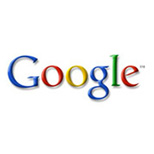
Google has had several logos since its renaming from BackRub. The current official Google logo was designed by Ruth Kedar, and is a wordmark based on the Catull typeface. The company also includes various modifications and/or humorous features, such as cartoon modifications of their logo for use on holidays, birthdays of famous people, and major events, such as the Olympics. These special logos, some designed by Dennis Hwang, have become known as Google Doodles. Google subsidiary YouTube has also featured some custom logos to highlight special events occurring on the site, these have been unofficially nicknamed “Yoodles”. As of 14 February 2011, Google’s own gallery features 1002 logos.
In 1998, Sergey Brin created a computerized version of the Google letters using the free graphics program GIMP. The exclamation mark was added, mimicking the Yahoo! logo.”There were a lot of different color iterations”, says Ruth Kedar, the graphic designer who developed the now-famous logo. “We ended up with the primary colors, but instead of having the pattern go in order, we put a secondary color on the L, which brought back the idea that Google doesn’t follow the rules.”
In 2010, the Google logo received its first major and permanent overhaul since 1999. The new logo was first tested in November 2009 and was officially launched on May 6, 2010. It utilises an identical typeface to the previous logo, but features a distinctly orange-colored “o” in place of the previous yellowish “o”, as well as more subtle shadow rendered in a different shading style. (Source Wikipedia 11 May 2012)
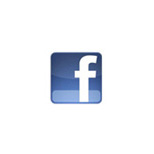
Facebook. Mark Zuckerberg wrote Facemash, the predecessor to Facebook, on October 28, 2003, while attending Harvard as a sophomore. According to The Harvard Crimson, the site was comparable to Hot or Not, and “used photos compiled from the online facebooks of nine houses, placing two next to each other at a time and asking users to choose the ‘hotter’ person”.
To accomplish this, Zuckerberg hacked into the protected areas of Harvard’s computer network and copied the houses’ private dormitory ID images. Harvard at that time did not have a student “facebook” (a directory with photos and basic information), though individual houses had been issuing their own paper facebooks since the mid-1980s. Facemash attracted 450 visitors and 22,000 photo-views in its first four hours online.
The site was quickly forwarded to several campus group list-servers, but was shut down a few days later by the Harvard administration. Zuckerberg was charged by the administration with breach of security, violating copyrights, and violating individual privacy, and faced expulsion. Ultimately, the charges were dropped. Zuckerberg expanded on this initial project that semester by creating a social study tool ahead of an art history final, by uploading 500 Augustan images to a website, with one image per page along with a comment section. He opened the site up to his classmates, and people started sharing their notes.
The following semester, Zuckerberg began writing code for a new website in January 2004. He was inspired, he said, by an editorial in The Harvard Crimson about the Facemash incident. On February 4, 2004, Zuckerberg launched “Thefacebook”, originally located at thefacebook.com.
Six days after the site launched, three Harvard seniors, Cameron Winklevoss, Tyler Winklevoss, and Divya Narendra, accused Zuckerberg of intentionally misleading them into believing he would help them build a social network called HarvardConnection.com, while he was instead using their ideas to build a competing product. The three complained to the Harvard Crimson, and the newspaper began an investigation. The three later filed a lawsuit against Zuckerberg, subsequently settling.
Membership was initially restricted to students of Harvard College, and within the first month, more than half the undergraduate population at Harvard was registered on the service. Eduardo Saverin (business aspects), Dustin Moskovitz (programmer), Andrew McCollum (graphic artist), and Chris Hughes soon joined Zuckerberg to help promote the website. In March 2004, Facebook expanded to Stanford, Columbia, and Yale. It soon opened to the other Ivy League schools, Boston University, New York University, MIT, and gradually most universities in Canada and the United States.
Facebook was incorporated in mid-2004, and the entrepreneur Sean Parker, who had been informally advising Zuckerberg, became the company’s president. In June 2004, Facebook moved its base of operations to Palo Alto, California. It received its first investment later that month from PayPal co-founder Peter Thiel. The company dropped The from its name after purchasing the domain name facebook.com in 2005 for $200,000.
Facebook launched a high-school version in September 2005, which Zuckerberg called the next logical step. At that time, high-school networks required an invitation to join. Facebook later expanded membership eligibility to employees of several companies, including Apple Inc. and Microsoft. Facebook was then opened on September 26, 2006, to everyone of age 13 and older with a valid email address.
On October 24, 2007, Microsoft announced that it had purchased a 1.6% share of Facebook for $240 million, giving Facebook a total implied value of around $15 billion. Microsoft’s purchase included rights to place international ads on Facebook.[ In October 2008, Facebook announced that it would set up its international headquarters in Dublin, Ireland. In September 2009, Facebook said that it had turned cash-flow positive for the first time. In November 2010, based on SecondMarket Inc., an exchange for shares of privately held companies, Facebook’s value was $41 billion (slightly surpassing eBay’s) and it became the third largest U.S. Web company after Google and Amazon.
Traffic to Facebook increased steadily after 2009. More people visited Facebook than Google for the week ending March 13, 2010.
In March 2011 it was reported that Facebook removes approximately 20,000 profiles from the site every day for various infractions, including spam, inappropriate content and underage use, as part of its efforts to boost cyber security.
In early 2011, Facebook announced plans to move to its new headquarters, the former Sun Microsystems campus in Menlo Park, California.
Release of statistics by DoubleClick showed that Facebook reached one trillion pageviews in the month of June 2011, making it the most visited website in the world. It should, however, be noted that Google and some of its selected websites are not counted in the DoubleClick rankings.
According to the Nielsen Media Research study, released in December 2011, Facebook is the second most accessed website in the US.
In March 2012, Facebook announced App Center, an online mobile store which sells applications that connect to Facebook. The store will be available to iPhone, Android and mobile web users.
In March 2012, members of the LGBTI community asked Facebook to add a “other”, “third gender” or “intersex” tab in the gender option which contains only male and female. Facebook refused and said that individuals can “opt out” of showing their gender.
Facebook, Inc. held an initial public offering on May 17, 2012, negotiating a share price of $38 apiece, valuing the company at $104 billion, the largest valuation to date for a newly listed public company.
On August 23rd, 2012 Facebook released the much anticipated update to its iOS app, version 5.0. The app, which did not receive positive sentiments from its users, was rebuilt from the ground up; the app no longer uses page views which made it slow in the past but now utilizes code that uses native elements of iOS. The result is a much smoother, faster, and easier to use app. (Source Wikipedia 10 September 2012)
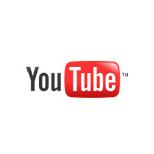
YouTube was founded by Chad Hurley, Steve Chen, and Jawed Karim, who were all early employees of PayPal. Hurley had studied design at Indiana University of Pennsylvania, while Chen and Karim studied computer science together at the University of Illinois at Urbana-Champaign.
According to a story that has often been repeated in the media, Hurley and Chen developed the idea for YouTube during the early months of 2005, after they had experienced difficulty sharing videos that had been shot at a dinner party at Chen’s apartment in San Francisco. Karim did not attend the party and denied that it had occurred, while Chen commented that the idea that YouTube was founded after a dinner party “was probably very strengthened by marketing ideas around creating a story that was very digestible”.
YouTube began as a venture-funded technology startup, primarily from a $11.5 million investment by Sequoia Capital between November 2005 and April 2006. YouTube’s early headquarters were situated above a pizzeria and Japanese restaurant in San Mateo, California. The domain name www.youtube.com was activated on February 14, 2005, and the website was developed over the subsequent months.
The first YouTube video was entitled Me at the zoo, and shows co-founder Jawed Karim at the San Diego Zoo. The video was uploaded on April 23, 2005, and can still be viewed on the site.
YouTube offered the public a beta test of the site in May 2005, six months before the official launch in November 2005. The site grew rapidly, and in July 2006 the company announced that more than 65,000 new videos were being uploaded every day, and that the site was receiving 100 million video views per day. According to data published by market research company comScore, YouTube is the dominant provider of online video in the United States, with a market share of around 43 percent and more than 14 billion videos viewed in May 2010. YouTube says that roughly 60 hours of new videos are uploaded to the site every minute, and that around three quarters of the material comes from outside the U.S. The site has eight hundred million unique users a month. It is estimated that in 2007 YouTube consumed as much bandwidth as the entire Internet in 2000. Alexa ranks YouTube as the third most visited website on the Internet, behind Google and Facebook.
The choice of the name www.youtube.com led to problems for a similarly named website, www.utube.com. The owner of the site, Universal Tube & Rollform Equipment, filed a lawsuit against YouTube in November 2006 after being overloaded on a regular basis by people looking for YouTube. Universal Tube has since changed the name of its website to www.utubeonline.com. In October 2006, Google Inc. announced that it had acquired YouTube for $1.65 billion in Google stock, and the deal was finalized on November 13, 2006. Google does not provide detailed figures for YouTube’s running costs, and YouTube’s revenues in 2007 were noted as “not material” in a regulatory filing. In June 2008, a Forbes magazine article projected the 2008 revenue at $200 million, noting progress in advertising sales. Visitors to YouTube spend an average of fifteen minutes a day on the site, in contrast to the four or five hours a day spent by a typical U.S. citizen watching television.
YouTube entered into a marketing and advertising partnership with NBC in June 2006. In November 2008, YouTube reached an agreement with MGM, Lions Gate Entertainment, and CBS, allowing the companies to post full-length films and television episodes on the site, accompanied by advertisements in a section for US viewers called “Shows”. The move was intended to create competition with websites such as Hulu, which features material from NBC, Fox, and Disney. In November 2009, YouTube launched a version of “Shows” available to UK viewers, offering around 4,000 full-length shows from more than 60 partners. In January 2010, YouTube introduced an online film rentals service, which is currently available only to users in the US, Canada and the UK. The service offers over 6,000 films.
In March 2010, YouTube began free streaming of certain content, including 60 cricket matches of the Indian Premier League. According to YouTube, this was the first worldwide free online broadcast of a major sporting event.
On March 31, 2010, the YouTube website launched a new design, with the aim of simplifying the interface and increasing the time users spend on the site. Google product manager Shiva Rajaraman commented: “We really felt like we needed to step back and remove the clutter.” In May 2010, it was reported that YouTube was serving more than two billion videos a day, which it described as “nearly double the prime-time audience of all three major US television networks combined”. In May 2011, YouTube reported in its company blog that the site was receiving more than three billion views per day. In January 2012, YouTube stated that the figure had increased to four billion videos streamed per day.
In October 2010, Hurley announced that he would be stepping down as chief executive officer of YouTube to take an advisory role, and that Salar Kamangar would take over as head of the company.
In April 2011, James Zern, a YouTube software engineer, revealed that 30 percent of videos accounted for 99 percent of views on the site.
In November 2011, the Google+ social networking site was integrated directly with YouTube and the Chrome web browser, allowing YouTube videos to be viewed from within the Google+ interface. In December 2011, YouTube launched a new version of the site interface, with the video channels displayed in a central column on the home page, similar to the news feeds of social networking sites. At the same time, a new version of the YouTube logo was introduced with a darker shade of red, the first change in design since October 2006. (Source Wikipedia 10 September 2012)
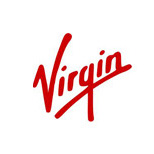
Virgin Group Limited is a British branded venture capital conglomerate organisation founded by business tycoon Richard Branson. The core business areas are travel, entertainment and lifestyle. Virgin Group’s date of incorporation is listed as 1989 by Companies House, who class it as a holding company; however Virgin’s business and trading activities date to the 1970s. The net worth of Virgin Group Ltd as of September 2008 is £5.01 billion. It consists of more than 400 companies around the world.
Although Branson retains complete ownership and control of the Virgin Brand, the commercial set-up of companies using it is varied and complex. Each of the companies operating under the Virgin brand is a separate entity, with Branson completely owning some and holding minority or majority stakes in others. Occasionally, he simply licenses the brand to a company that has purchased a division from him, such as Virgin Mobile USA, Virgin Mobile Australia, Virgin Radio and Virgin Music (now part of EMI).
The brand name “Virgin” arose when Branson and a partner were starting their first business, a record shop. They considered themselves virgins in business. The current Virgin logo was originally sketched on a paper napkin and remains largely unchanged since 1979. (Source Wikipedia 21 Jan 2012)
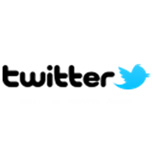
Twitter is an online social networking service and microblogging service that enables its users to send and read text-based messages of up to 140 characters, known as “tweets”.
It was created in March 2006 by Jack Dorsey and launched that July. The service rapidly gained worldwide popularity, with over 500 million active users as of 2012, generating over 340 million tweets daily and handling over 1.6 billion search queries per day. Since its launch, Twitter has become one of the top 10 most visited websites on the Internet, and has been described as “the SMS of the Internet.” Unregistered users can read tweets, while registered users can post tweets through the website interface, SMS, or a range of apps for mobile devices.
Twitter Inc. is based in San Francisco, with additional servers and offices in New York City, Boston, and San Antonio.
Twitter has been cited as an important factor in the Arab Spring and other political protests.
Twitter has become internationally identifiable by its signature bird logo. The original logo was in use from its launch in March 2006 until September 2010. A slightly modified version succeeded the first style when the website underwent its first redesign.
On February 27, 2012, a tweet from an employee that works on the company’s platform and API discussed the evolution of the “Larry the Bird” logo with Twitter’s creative director and it was revealed that it was named after Larry Bird of the NBA’s Boston Celtics fame. This detail had previously been confirmed when the Boston Celtics’ director of interactive media asked Twitter co-founder Biz Stone about it in August 2011.
On June 5, 2012, Twitter unveiled its third logo redesign, replacing Larry the Bird with an updated icon simply named as the “Twitter Bird.” As of this logo revision, the word “Twitter” and the lowercase letter “t” are no longer used, with the bird becoming the sole symbol for the company’s branding. According to Douglas Bowman, designer of Twitter, the new logo resembles a Mountain Bluebird. (Source Wikipedia 9 September 2012)
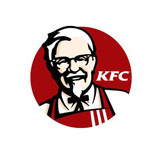
KFC, founded and also known as Kentucky Fried Chicken, is a chain of fast food restaurants based in Louisville, Kentucky, United States. KFC has been a brand and operating segment, termed a concept of Yum! Brands since 1997 when that company was spun off from PepsiCo as Tricon Global Restaurants Inc.
KFC primarily sells chicken pieces, wraps, salads and sandwiches. While its primary focus is fried chicken, KFC also offers a line of grilled and roasted chicken products, side dishes and desserts. Outside the USA, KFC offers beef based products such as hamburgers or kebabs, poutine, pork based products such as ribs and other regional fare.
The company was founded as Kentucky Fried Chicken by Colonel Harland Sanders in 1952, though the idea of KFC’s fried chicken actually goes back to 1930. Although Sanders died in 1980, he remains an important part of the company’s branding and advertisements, and “Colonel Sanders” or “The Colonel” is a metonym for the company itself. The company adopted KFC, an abbreviated form of its name, in 1991. Starting in April 2007, the company began using its original name, Kentucky Fried Chicken, for its signage, packaging and advertisements in the U.S. as part of a new corporate re-branding program; Newer and remodeled restaurants will adopt the new logo and name, while older stores will continue to use the 1980s signage. Additionally, Yum! continues to use the abbreviated name freely in its advertising. (Source Wikipedia 21 Jan 2012)
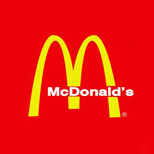
The Golden Arches are the symbol of McDonald’s, the global fast-food hamburger chain. Originally, real arches were part of the restaurant design. They were incorporated into the chain’s logo in 1962, which resembled a stylized restaurant, and in the current Golden Arches logo, introduced 1968, resembling an “M” for “McDonald’s”.
The arches were introduced in 1953, when Richard and Maurice McDonald were building their first franchised outlet in Phoenix, Arizona. Architect Stanley Meston designed a walk-up hamburger stand with red and white tiles and a distinctive sloped roof, but Richard, wanting more visual appeal, sketched a pair of stylized yellow arches, one at each side. Meston accepted other changes but rejected the arches; in the end, sign-maker George Dexter was hired to construct the arches. When viewed from an angle, the two yellow arches design was reminiscent of the two loops forming the letter “M” for McDonald’s. A sign out front incorporated yet a third yellow arch along with the chain’s signature character, a chef named Speedee.
In 1962, seeking to upgrade its image, the company sought a new logo. Fred Turner sketched a stylized “V”, but the company’s head of engineering and design, Jim Schindler, extended the “V” into an “M” resembling a McDonald’s store viewed from an angle, with a red isosceles trapezoid “roof” serving as background for lettering.
While McDonald’s dropped the physical arches from nearly all of its restaurants in the 1960s, the Golden Arches have remained in the logo, and as a commonly understood term for the company.
They have also been seen more broadly as a symbol of capitalism or globalization, since they are one of the more prominent American corporations that have become global in their reach (along with Coca-Cola and Nike). (Source Wikipedia 21 Jan 2012)
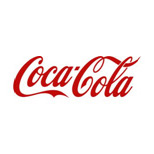
Coca Cola the product that has given the world its best-known taste was born in Atlanta, Georgia, on May 8, 1886. Dr. John Stith Pemberton, a local pharmacist, produced the syrup for Coca-Cola®, and carried a jug of the new product down the street to Jacobs’ Pharmacy, where it was sampled, pronounced “excellent” and placed on sale for five cents a glass as a soda fountain drink. Carbonated water was teamed with the new syrup to produce a drink that was at once “Delicious and Refreshing,” a theme that continues to echo today wherever Coca-Cola is enjoyed.
Thinking that “the two Cs would look well in advertising,” Dr. Pemberton’s partner and bookkeeper, Frank M. Robinson, suggested the name and penned the now famous trademark “Coca-Cola” in his unique script. The first newspaper ad for Coca-Cola soon appeared in The Atlanta Journal, inviting thirsty citizens to try “the new and popular soda fountain drink.” Hand-painted oilcloth signs reading “Coca-Cola” appeared on store awnings, with the suggestion “Drink” added to inform passersby that the new beverage was for soda fountain refreshment. During the first year, sales averaged a modest nine drinks per day.
Dr. Pemberton never realized the potential of the beverage he created. He gradually sold portions of his business to various partners and, just prior to his death in 1888, sold his remaining interest in Coca-Cola to Asa G. Candler. An Atlantan with great business acumen, Mr. Candler proceeded to buy additional rights and acquire complete control. (Source the-cocacolacompany.com 7 April 2012)
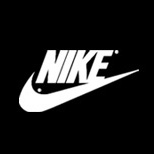
The Nike “swoosh'” is a design created in 1971 by Carolyn Davidson, while she was a graphic design student at Portland State University. She met Phil Knight while he was teaching accounting classes and she started doing some freelance work for his company, Blue Ribbon Sports (BRS). While most people would regard the symbol as a check mark, the Nike swoosh was created when Carolyn was frustrated about not being able to create a “new” “fresh” logo she drew a quick check on a paper and then from that day the “Swoosh” was born. For seven years after its founding in 1964, BRS imported Onitsuka Tiger brand running shoes. In 1971, BRS decided to launch its own brand, which would first appear on a soccer cleat called the Nike, manufactured in Mexico. Knight approached Davidson for design ideas for this new brand, and she agreed to provide them, charging a rate of US$2 per hour.
In the spring of 1971, Davidson presented a number of design options to Knight and other BRS executives, and they ultimately selected the mark now known globally as the Swoosh. “I don’t love it,” Knight told her, “but I think it will grow on me.” Davidson submitted a bill for US$35 for her work. (In 1983, Knight gave Davidson a diamond Swoosh ring and an envelope filled with Nike stock to express his gratitude.)
In June 1972, the first running shoes bearing the Swoosh were introduced at the U.S. Track and Field Olympic Trials in Eugene, Oregon. Nike continues to use the brand today. (Source Wikipedia 21 Jan 2012)
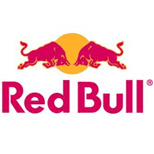
Red Bull is an energy drink sold by Austrian company Red Bull GmbH, created in 1987. In terms of market share, Red Bull is the most popular energy drink in the world, with 4.5 billion cans sold each year.
Austrian entrepreneur Dietrich Mateschitz was inspired by a pre-existing energy drink named Krating Daeng, which was first invented and sold in Thailand. He took this idea, modified the ingredients to suit the tastes of Westerners, and, in partnership with Chaleo Yoovidhya, founded Red Bull GmbH in Austria. In Thai, daeng means red, and krating is the reddish-brown bovine called a “gaur”, which is an animal slightly larger than the bison. Red Bull is sold in a tall and slim blue-silver can; in Thailand and in some parts of Asia it is sold in a wider gold can with the name of Krating Daeng or Red Bull Classic. Both are different products, produced separately from Red Bull.
The company slogan is “Red Bull gives you wings” and the product is marketed through advertising, events (Red Bull Air Race, Red Bull Crashed Ice), sports team ownerships (Red Bull Racing, Scuderia Toro Rosso, EC Red Bull Salzburg, FC Red Bull Salzburg, Red Bull New York, RB Leipzig, Red Bull Brasil), celebrity endorsements, and music, through its record label Red Bull Records. (Source Wikipedia 11 August 2012)

